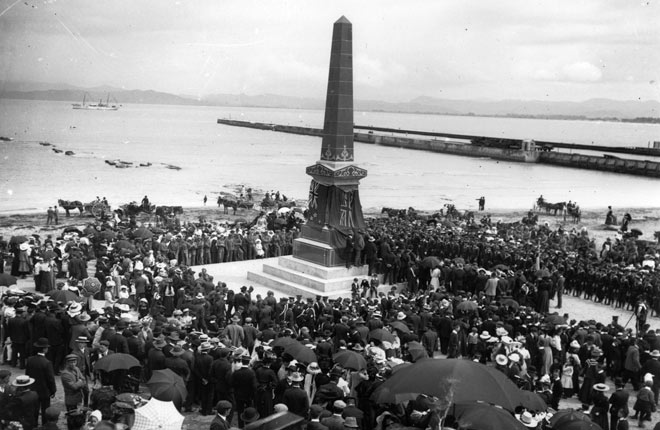
In 1769, on his first visit to New Zealand, English explorer James Cook and several of his party came ashore on the eastern bank of the Tūranganui River on 8 October. Gisborne was later established around this site, and in 1902 a committee of townspeople was formed to obtain funds for a memorial to Cook's first steps on New Zealand soil. Money was raised nationwide, with schoolchildren contributing a penny each. The granite-sheathed concrete obelisk was officially unveiled in 1906, on the 137th anniversary of the famous event. It was the first monument to a European explorer in New Zealand, and marked the beginnings of widespread interest in memorialising the country's history. In 1964, in response to nearby reclamations and industrial development, the Gisborne committee of the New Zealand Historic Places Trust registered the land around the monument as a historic reserve, and in 1990 it was designated a national historic reserve – the first on the New Zealand mainland.
Te whakamahi i tēnei tūemi
Tairawhiti Museum, Te Whare Taonga O Te Tairawhiti
Reference:
1.45-176
Permission of Tairawhiti Museum, PO Box 716, Gisborne, must be obtained before any re-use of this image.









Tāpiritia te tākupu hou